#self help therapy
Text
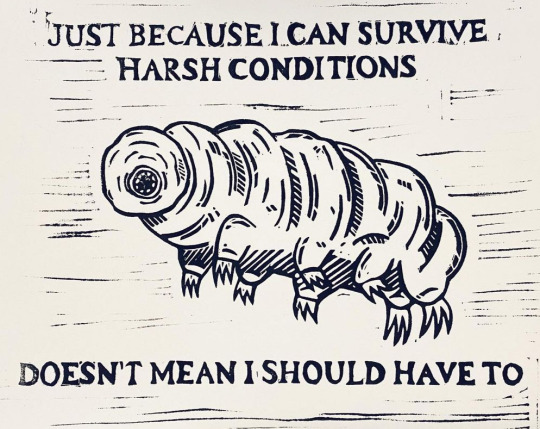
#mental health#self reflection#be yourself#self improvement#self help#new life#letting go#inspirational quotes#new beginnings#positivity#therapy#self therapy#survival#emotional support#life lessons
59K notes
·
View notes
Text
.."But" Its...
#This post may contain affiliate links
Consistency in a nutshell is being able to show productivity, growth, endurance. In our daily habits we can create ways to build our strengths and weaknesses through consistency. When we use our time effectively, our ability to understand what we do is strengthened. As we build on our life’s goals we are able to identify more and more what may be problems…

View On WordPress
#achieving your goals#finding your passion#fixed mindset#goal oriented#guided therapy#how to build a successful career#how to change your career#mental adaption#mindset#put to the test#self development#self help therapy#successful career#trial and error
0 notes
Text
Cognitive Techniques To Change Your Thoughts ✨✨
Cognitive techniques are strategies used in cognitive therapy to help you identify and change negative thoughts and beliefs. These techniques should be practiced regularly so that they become habits.
Cognitive Restructuring: This involves identifying and challenging negative or irrational thoughts and replacing them with more positive or rational beliefs.
Thought Stopping: When you notice a negative thought entering your mind, you can mentally shout "Stop!" This interrupts the thought process and gives you a chance to replace the negative thought with a positive one.
Mindfulness and Meditation: These practices help you become more aware of your thoughts and feelings in the present moment. When you observe your thoughts without judgment, you gain insight into negative patterns and choose to let them go.
Journaling: Writing down your thoughts can help you process and analyze them. With time you can identify patterns and work on changing negative thought cycles.
Positive Affirmations: Repeating positive statements can help counteract negative self talk and reinforce positive beliefs about yourself.
Evidence Collection: When faced with a negative belief, ask yourself, "What evidence do I have that supports or refutes this thought?" This can help you see things in a more balanced way.
Decatastrophizing: If you tend to imagine the worst scenario, ask yourself how likely it is to happen and what other possible outcomes there might be. This can help you view situations more realistically.
Labeling: Instead of saying "I am a failure," label the thought as "a negative thought about my abilities."
Distraction: Engaging in an activity or hobby can divert your attention from negative thoughts and give your mind a break.
Scheduling Worry Time: Instead of ruminating on worries throughout the day, set aside a specific time to process them. This can prevent constant worry and allow you to focus on other tasks.
Challenging Cognitive Distortions: Recognize and challenge cognitive distortions like black-and-white thinking, overgeneralization, and personalization.
Visual Imagery: Visualize a place or situation where you feel calm and happy. This can help shift your focus from negative thoughts.
These are very simple descriptions and examples of cognitive techniques. I listed the ones we can put into practice on our own. There are more in depth methods and practices used by doctors on different fields of study and practice. I can list, as well as add upon the information listed here.
#cognitive science#cognitive behavioral therapy#psychology#personal improvement#personal development#personal growth#self help#self improvement#self care#limiting beliefs#positive mindset#affirmations
4K notes
·
View notes
Text
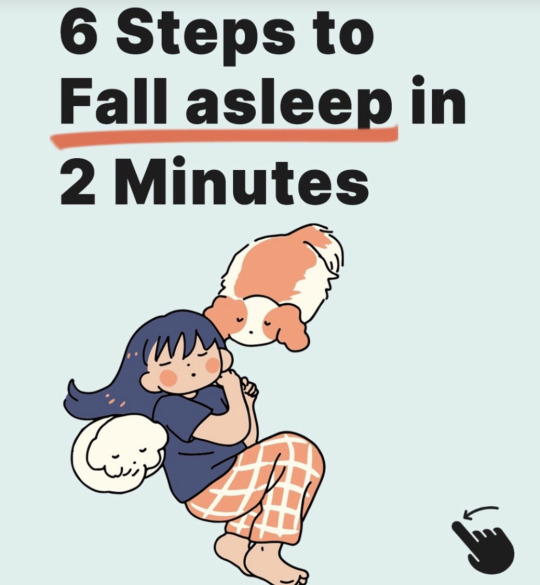
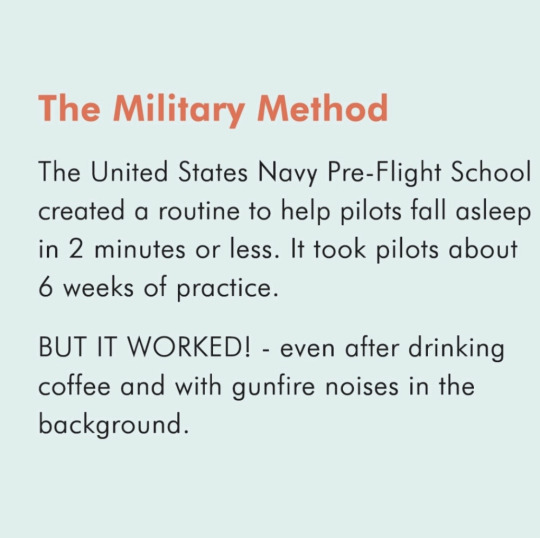

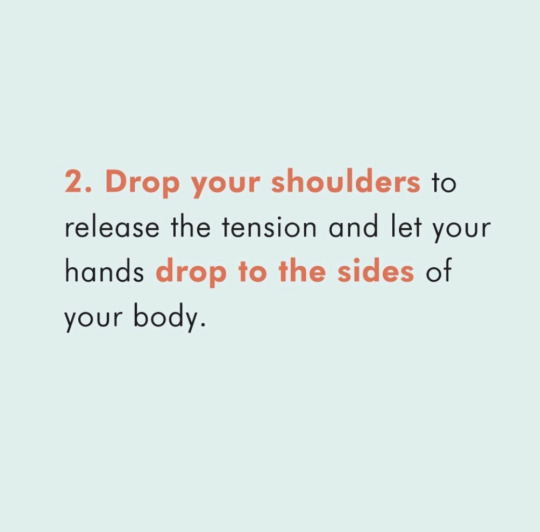
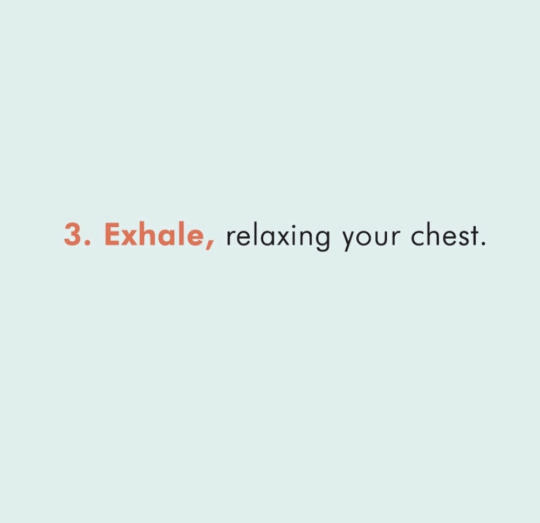



3K notes
·
View notes
Text
Creating a self insert (who looks a bit like me) is the best thing I've ever done, as it makes me feel so much better about myself. I can be a person in the world of my fav media? I can have adventures with magic, superpowers or just hang out with my fav characters? And there are characters who like or even love me for who I am? Amazing <3
#self insert x canon#self insert#self insert oc#selfship#selfship community#;babbling phia#;okay to reblog#just... a random thought which made me happy#I sometimes struggle with feeling like a 'worthy' person idk#so this... really really helps#It's like a special form of therapy
882 notes
·
View notes
Text
Honestly the fact that SQQ denies he's gay or into men while holding Luo Binghe in his arms and calling him his precious little special bean must be the biggest ego boost for him. Unknowingly the man has activated the trap card and means that Binghe gets to look Liu Qinnge in the eyes and be like 'you here that. Not into men. Just me. Im a special little boy' and dance his middle fingers in their face while shizun isn't looking.
It's great I love that for him
#svsss#scumbag system#svsss shitpost#scum villian#scum villain self saving system#luo binghe#bingqiu#years of therapy are nothing in the face of getting able to gloat#they need help your honor#my boys are in shambles
1K notes
·
View notes
Text

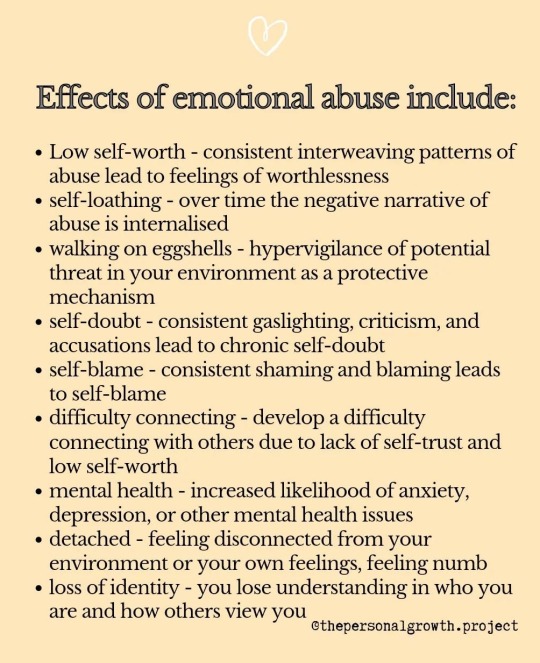
Sadly I can check off alot of items from this list. Time and self education are the only things that will help reclaim life back once you lose yourself with emotional abuse.
#absurd#mentalhealth#mentalhealthawareness#mental abuse#mental wellbeing#mental health#mentally drained#emotionally drained#emotional abuse#emotional trauma#toxic#toxic family#dysfunctional family#toxicity#toxic people#self help#selfhelp#self improvement#self therapy#therapy#family-trauma
2K notes
·
View notes
Text
This is for all the people who are struggling but just keep getting up and trying. The ones who keep showing up, day after day, even when they don’t want to. The ones who stare at the fridge, willing themselves to cook food even though they want to skip. The ones who get up and get water even when they’d prefer to ignore their own needs. The ones who keep on breathing, even when they don’t really want to, because they trust the day will come when the tightness around their hearts has eased.
this is for everyone, because everyone here today has kept on being. even on the days when they didn’t particularly want to. the hard days and the sad ones and the hurt ones, too. You are still here, trying, and this is a moment of recognition for all the beautiful work you’ve done.
Keep going, love. The light comes back.
#positivity#mental wellness#self improvement#self care#self love#depression advice#self knowledge#mental wellbeing#depression and anxiety#self help#mental health#mental illness#mentalheathawareness#mentalwellness#stress#awareness#mentally tired#mental therapy#care#positive thoughts#positivemindset#positive quotes#positivethinking#anxiety issues#depressive episode#depression awareness
1K notes
·
View notes
Text
why is it so pretty when i bleed
#shblr#self h@rm#tw self destruction#tw shelf harm#tw self h4rm#self mutalition#i need therapy#i need help lol#beansblr#styro cvts#cvtt1ng#tw cvtting#cvutting#fresh cvts#cuttıng
2K notes
·
View notes
Text



#childhood trauma#trauma#self help#self love journey#self love#self care journey#self care#self healing#healing journey#mental health matters#mental health#therapy#note to self#things to remind myself#from twitter#twitter
896 notes
·
View notes
Text
anyone suffering from headaches or migraines, do try this playlist. i always knew about frequency music but never tried it out, and what a loss! i wish i had tried it out sooner since i suffer from headaches every day, but the music truly calmed my senses, and i feel a lot better today than i usually do. i hope it helps you too. also, please seek help from a professional, if you can. you deserve a life full of peace, not pain.
[kindly reblog and help a soul out. headaches are terrible and painful, and i hope no one has to go through them every single second of their life]
#mental health#headache#migraine#chronic illness#chronic pain#medication#migraines#self help#self care#infj#bpd#overthinking#depression#mental illness#therapy#music#anxiety#health#wellbeing#stress#pain
553 notes
·
View notes
Text
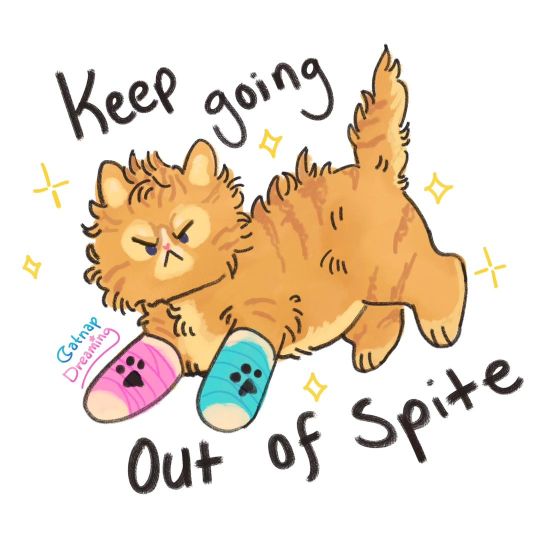
"Keep going out of spite"
RIP Tater Tot 💔
Credits to Catnap Dreaming on Instagram
#cats#cat memes#funny cats#tater tot#quotes#phrases#inspiring#self help#self affirmation#healing#healing journey#therapy#mental health
550 notes
·
View notes
Text
Trauma is embedded within the body and ingrained in the brain. For lasting change, create strategies that address both the physical and mental aspects of trauma.
Physical Therapies:
Sensorimotor Psychotherapy: Leverages bodily sensations to navigate through trauma.
Yoga: Boosts bodily mindfulness and alleviates stress.
Somatic Experiencing: Helps discharge trauma-induced physical tension.
Tai Chi: Enhances equilibrium through deliberate movements.
Massage Therapy: Facilitates emotional liberation through easing muscle tightness.
Acupuncture: Activates the body's healing spots.
Craniosacral Therapy: Eases stress through soft manipulations of the skull and spine.
Breathwork: Employs breathing techniques for better physical and psychological well-being.
Dance Movement Therapy: Merges emotional expression with physical activity.
Mental Therapies:
Sensorimotor Psychotherapy: Bridges the gap between mental impacts and bodily reactions.
EMDR (Eye Movement Desensitization and Reprocessing): Aids in memory processing through eye movements.
CBT (Cognitive Behavioral Therapy): Aims to transform harmful thought patterns.
IFS (Internal Family Systems): Promotes healing within different parts of the psyche.
NLP (Neuro-Linguistic Programming): Modifies behavior via language and thought patterns.
Neurofeedback: Boosts brain activity for better function.
MBCT (Mindfulness-Based Cognitive Therapy): Combines mindfulness practices with cognitive therapeutic techniques.
Psychodynamic Therapy: Investigates the influence of past experiences.
Narrative Therapy: Helps individuals reframe their life stories.
Please remember that I am not a therapist. Speaking to a professional will help you figure out what course of action is better for you.
#mental health#emotional intelligence#mental wellness#health and wellness#cognitive behavioral therapy#self help#self improvement#self love#self awareness#self reflection#healing#feelings#personal improvement#personal development
568 notes
·
View notes
Text

Some days self therapy is cruising different social media sites looking for people requesting "Send Pet Pics" because of bad days and fulfilling that request hoping it helps.
694 notes
·
View notes
Text


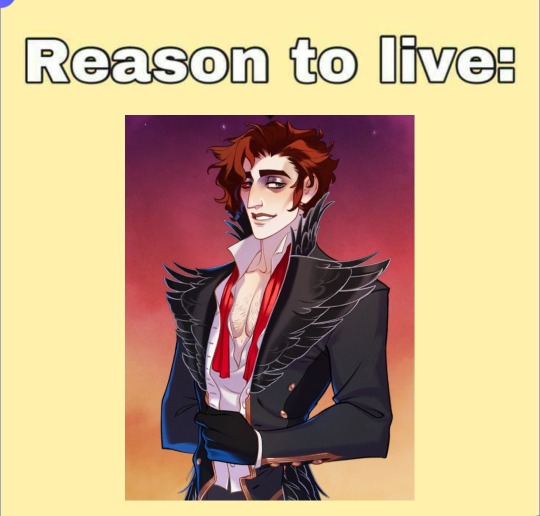


Drawing him seems to be the only thing that gives me peace now, so there's that
#julian devorak#the arcana julian#the arcane game#dr devorak#ilya devorak#please help#I'm just so desperately in love with this fictional man#the arcana memes#the arcana#the arcana destroyed me#julian x mc#self insert#do I also need therapy? absolutely
743 notes
·
View notes
Text
The Conditions of Change
When adults seek change, they often focus on the intended result while hurrying through the practice. However, growth requires a bit more than 'just trying something out'. Here are some tips to help bring change upon your life, good luck!
Consistency
Real change, especially as an adult, requires many, many repetitions of a behavior or movement or position. 'Trying hard' is usually counterproductive as it tenses the muscles and the emotions. It is necessary to let the exercise or method work without undue ego participation over time. The practice has to become, for a time, 'just what one does.'
Willingness
The practices that change long standing blocks will usually seem, when presented to an adult learner, to be too subtle, too corny, not relevant, and mostly downright wrong. One must be willing to really try something different if one is at the point where one's own ideas have failed. Of course, discernment cannot be completely disposed of, but if a learner wants what another person has, they must be willing to do what that person did, however unnecessary or stupid it seems.
Sustainability
So often adult learners hurl themselves into an activity, and neglect other aspects of their lives. Soon they end up dropping the practice and rarely get back to it. A good practice must be one that can be 'what one does' for a good while. Immersion approaches exist, for example a 30 day retreat, but then carryover to one's regular life becomes the issue.
First Things First (Urgent Things Second)
In our over-busy, over-booked lives, if we wait for a 'free moment' to practice something, it invariably never arrives. To have consistency with a new practice it is necessary to make it a priority and see that it gets done first, leaving less important things, even if more urgent, to 'scroll off the screen'
The Plateau is Where the Work Starts
All people have latent abilities that come online easily and quickly when they start a practice (often called newbie or 'noob' gains). But once the latent abilities are developed and the participant is working to develop brand new capacities, the going is much much slower. This is where the large majority quit, discouraged, but this is where the work really is beginning.
Anticipate Anxiety
Real change even in small amounts will cause anxiety, which can be insidious and hard to attribute to the new practice. In an uncanny way, impulses to start something incompatible with the new practice, or new worries, confusion, or minor injuries will threaten to derail the change process. Barring gross demonstrable harm, the need is to 'stay the course!'
Don't Look to Validation or Approval
If another person is the reason to do something, in a moment they can become the reason not to. When a practice is undertaken to please someone (and yes this can be unconscious or semi-conscious) there are two big barriers: 1) effort gets substituted for the fruits of the practice, and the practice gets or stays sloppy because even sloppy practice shows effort, and 2) the instinct for autonomy (buried itself in some measure in the unconscious) will cause resistance
Frequent self-measurement is unhelpful
When one has undergone real change others will point it out, don't worry. Trying to get one's inner judge to validate oneself takes attention off the practice, apart from any concern that self-measurement will not be accurate.
The Placebo Effect is Not the Effect
Whenever one takes on a new promising practice there is going to be an immediate sense of elation. There is nothing wrong with enjoying this, but know that 1) it wears out in two to six weeks, 2) the real beneficial effect of the practice will be much more subtle at first then this elation, and take months or years to manifest. Many believe that when the elation stops, it means the practice has stopped working.
Understand the Difference Between Almost Nothing Happening and Actually Nothing Happening
When a ten-year-old wakes up in the morning no one notices a change in size from the night before, but actually there is, and over the course of years, that becomes very apparent. Real growth is like that, in that, almost nothing is happening. But with any practice, participants may worry that they are following a dead end. While some discernment and critical thinking may be needed in selecting a practice, once started attention should be focused on the actually practice, with some faith that results will come.
Work With Others
When working alone, long-standing defensive patterns can undermine the intended practice or even turn it into its opposite. Not that any growth practice is like an Olympic sport calling for perfect performance--one is simply seeking to stay in the 'stretch zone' or 'edge'. Other people, either peers or coaches can help with that by supplying explicit or implicit feedback. Not because they are know everything, but because they have gone or are going down the same path, and are more objective about you ('a different set of eyes').
Find Where You Are and Work From There
Don't try to work from where you want to be, that will be slower not quicker. This is about acceptance, a prerequisite for change
The Tightrope is an Illusion
When in new experiential territory, it can seem that the practice being encouraged will either quickly fall into a pitfall at one end, or into the opposite pitfall. There is no happy middle envisionable. This is just a lack of experience. For an experienced aerialist, the rope has come to appear like a sidewalk.
Don't Get Stuck in Inspiration
Inspiration, such as from most self-improvement materials and forums provides temporary elation by itself and therefore can become a habit. But nothing changes from inspiration. Slightly more important is turning inspiration into intention, definitely more important is turning intention into action, and absolutely more important is turning action into consistency.
There is No Such Thing as 'Ready'
Change is made by starting to work where you are with the tools at hand. In time, other tools will come to hand. The feeling of 'ready' does happen in life, but it has to do with situations already mastered. Also where aggression, anger, or desire is mobilized, the feeling of ready is not relevant.
Change is More About Unlearning than Learning
Here is what often happens: a man or woman wants to change a pattern so they focus directly on it and have initial success doing something different. Then they focus on other things, thinking the change is in the bag. The unwanted pattern comes back! The learner despairs that they cannot learn. Actually, the unwanted pattern was never gone (yet) it was just suppressed. It takes a longish trail of resuppression and practicing new habits until new practices become dominant.
Don't Make Effort the Focus
Many adolescent and adult learners have grown up in invalidating, emotionally treacherous environments where they could never be sure that their choices and criticisms wouldn't be attacked. This can lead to a over-emphasis of effort as a universally defensible good--remember the saying "You can't blame a guy for trying." But effort, increases arousal and tightens muscles, and strongly undermines some areas of change like breathing, relaxation, meditation, flexibility, and social skills. Of course with 'zero effort' nothing will change but effort should not be the focus.
Make Distractions and Irritants Part of the Practice
Everyone has had an experience of finding a quiet place, preparing to meditate or stretch, and BAM!, a loud sound like a leaf lower erupts. Or for nice guys they might have guilt at doing something 'selfish'. There is a temptation to wait to a better time, which often becomes never. Our ego fears we will do something badly! But the truth is, anything that cultivates growth will be done, at best, badly (really just imperfectly). Doing something even less perfectly is just as good, or greater an opportunity for self awareness as doing something just imperfectly. Awareness, attention, and mindfulness is increased.
The Rubber Band Effect
When we push against a homeostatic system, even one with a unhappy 'set-point', the system pushes back. To succeed, of course consistency and perseverance is necessary, but on occasion, several interventions need to be brought to bear simultaneously to reach a threshhold where the homeostatic set point is 'flipped', or reset.
#life#therapy#life advice#advice#life changing habits#things can change#changed#change#be the change#self growth#personal growth#personal development#self worth#self help#self esteem#self awareness#self improvement#self efficacy#believeinyourself#self development#self change#self healing#work in progress#tips and tricks#self evolution#self empowerment#i thought you should know
1K notes
·
View notes